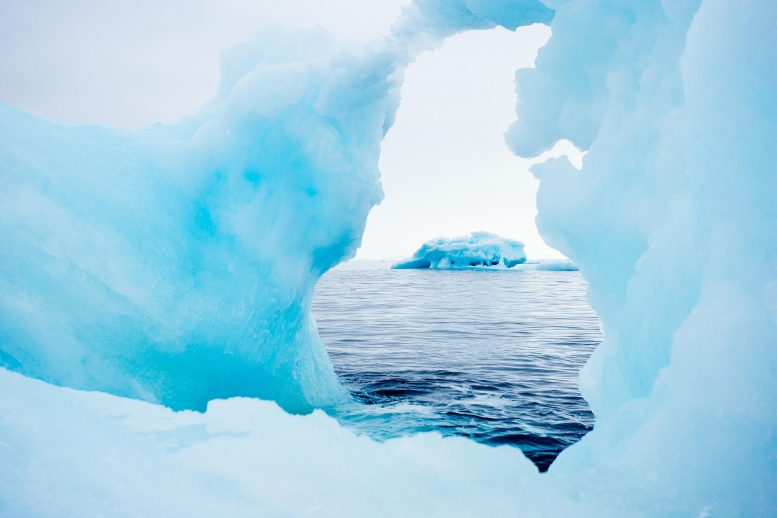“Missing Link” Found in Process That Leads to an Ice Age on Earth
4 Years, 3 Months, 5 Days, 3 Hours, 39 Minutes ago

New study unravels long-standing climate mystery and provides insight into how our planet may change in the future.
Scientists claim to have found the “missing link” in the process that leads to an ice age on Earth.
Melting icebergs in the Antarctic are the key, say the team from Cardiff University, triggering a series of chain reactions that plunges Earth into a prolonged period of cold temperatures.
The findings have been published in Nature from an international consortium of scientists from universities around the world.
It has long been known that ice age cycles are paced by periodic changes to Earth’s orbit of the sun, which subsequently changes the amount of solar radiation that reaches the Earth’s surface.
However, up until now it has been a mystery as to how small variations in solar energy can trigger such dramatic shifts in the climate on Earth.
In their study, the team propose that when the orbit of Earth around the sun is just right, Antarctic icebergs begin to melt further and further away from Antarctica, shifting huge volumes of freshwater away from the Southern Ocean and into the Atlantic Ocean.
As the Southern Ocean gets saltier and the North Atlantic gets fresher, large-scale ocean circulation patterns begin to dramatically change, pulling CO2 out of the atmosphere and reducing the so-called greenhouse effect.
This in turn pushes the Earth into ice age conditions.
As part of their study the scientists used multiple techniques to reconstruct past climate conditions, which included identifying tiny fragments of Antarctic rock dropped in the open ocean by melting icebergs.
The rock fragments were obtained from sediments recovered by the International Ocean Discovery Program (IODP) Expedition 361, representing over 1.6 million years of history and one of the longest detailed archives of Antarctic icebergs.
The study found that these deposits, known as Ice-Rafted Debris, appeared to consistently lead to changes in deep ocean circulation, reconstructed from the chemistry of tiny deep-sea fossils called foraminifera.
The team also used new climate model simulations to test their hypothesis, finding that huge volumes of freshwater could be moved by the icebergs.
Lead author of the study Aidan Starr, from Cardiff University’s School of Earth and Environmental Sciences, said: “We were astonished to find that this lead-lag relationship was present during the onset of every ice age for the last 1.6 million years. Such a leading role for the Southern Ocean and Antarctica in global climate has been speculated but seeing it so clearly in geological evidence was very exciting”.
Professor Ian Hall, co-author of the study and co-chief scientist of the IODP Expedition, also from the School of Earth and Environmental Sciences, said: “Our results provide the missing link into how Antarctica and the Southern Ocean responded to the natural rhythms of the climate system associated with our orbit around the sun.”
Over the past 3 million years the Earth has regularly plunged into ice age conditions, but at present is currently situated within an interglacial period where temperatures are warmer.
However, due to the increased global temperatures resulting from anthropogenic CO2 emissions, the researchers suggest the natural rhythm of ice age cycles may be disrupted as the Southern Ocean will likely become too warm for Antarctic icebergs to travel far enough to trigger the changes in ocean circulation required for an ice age to develop.
Professor Hall believes that the results can be used to understand how our climate may respond to anthropogenic climate change in the future.
“Likewise as we observe an increase in the mass loss from the Antarctic continent and iceberg activity in the Southern Ocean, resulting from warming associated with current human greenhouse-gas emissions, our study emphasises the importance of understanding iceberg trajectories and melt patterns in developing the most robust predictions of their future impact on ocean circulation and climate,” he said.
Professor Grant Bigg, from the University of Sheffield’s Department of Geography, who contributed to the iceberg model simulations, said: “The groundbreaking modelling of icebergs within the climate model is crucial for identifying and supporting the ice-rafted debris hypothesis of Antarctic iceberg meltwater impacts which are leading glacial cycle onsets.”